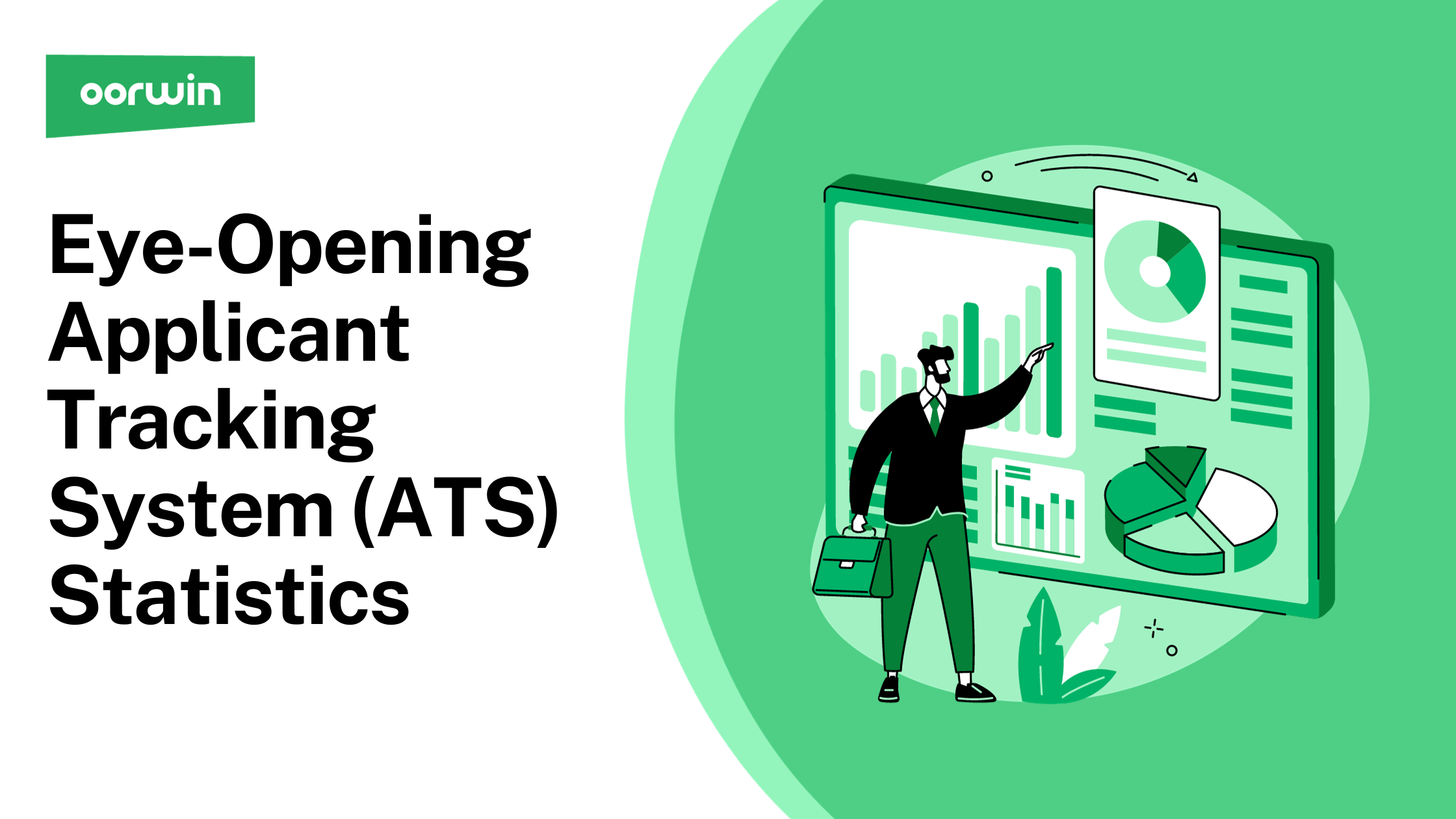Key Applicant Tracking System Statistics to Consider that Reshape Recruitment
In the evolving world of recruitment, Applicant Tracking Systems (ATS) has become a cornerstone. Applicant tracking systems (ATS) are engineered to enhance and simplify the recruitment process, offering a streamlined solution for filling vacancies and guiding applicants through their initial application stages. Typically, ATS solutions are equipped with capabilities for automating various processes, organizing interview schedules, parsing resumes, and managing document delivery. Certain ATSs also include functionalities for conducting background checks.
Although each ATS has its unique set of features and characteristics, its core purpose remains consistent: to gather applicant submissions and sustain communication with potential hires.
The real-world effectiveness of contemporary ATS platforms, however, varies. There’s a question about whether these systems meet the expectations of recruitment teams or fall short in certain areas. To understand this better, it’s essential to look at the actual performance statistics of modern ATS platforms.
How to Interpret ATS Statistics Effectively
ATS statistics reveal critical trends and efficiencies in recruitment processes. They offer insights into the adoption rate, effectiveness, and the impact of ATS on hiring quality, speed, and candidate experience.
Applicant tracking systems (ATS) are essential for employers and job seekers.
For job seekers, these systems offer insights into their likelihood of being chosen for a role, allowing them to tailor their applications more effectively. Conversely, employers can leverage the data from ATS to refine their recruitment strategies and select the most suitable candidates for their vacancies.
While the Applicant Tracking System statistics is instrumental in pinpointing the strengths and weaknesses of applicants, it’s crucial to recognize their limitations. They should ideally be used in tandem with other evaluation techniques to ensure a comprehensive assessment of candidates.
15 Incredible Applicant Tracking System Stats That Will Revolutionize your Hiring Strategy
Discover how these remarkable Applicant Tracking System statistics are transforming recruitment strategies globally.
75% Recruiters Use Applicant Tracking System
Approximately 75% of recruiters now incorporate Applicant Tracking Systems (ATS) in their hiring processes. This widespread adoption underscores the system’s effectiveness in streamlining the recruitment workflow, enhancing candidate tracking, and improving hiring efficiency. The reliance on ATS by most recruiters reflects its integral role in modern recruitment strategies.
98% of Fortune 500 Companies Use Applicant Tracking System
An impressive 98% of Fortune 500 companies utilize ATS in their hiring processes, signifying its crucial role in managing large-scale recruitment. This high adoption rate among top-tier companies highlights ATS’s capability to handle vast applicant volumes while maintaining organization and efficiency, showcasing its indispensability in competitive and fast-paced corporate environments.
94% Report Applicant Tracking System Improved Hiring
A substantial 94% of ATS users reported improved hiring processes, attributing this to the system’s effective sorting and screening of candidates. This applicant tracking system statistic reflects the significant impact of ATS on enhancing the quality and efficiency of the recruitment process, facilitating better candidate selection, and a streamlined hiring workflow.
75% Qualified Candidates Rejected by Applicant Tracking System
Around 75% of qualified candidates face rejection by ATS due to keyword mismatches or failure to meet specific criteria set in the job description. This statistic highlights a crucial challenge in ATS implementation, where potentially suitable candidates are filtered out, emphasizing the need for candidates to optimize their resumes to align with job-specific requirements.
Gen Z’s Preference for Modern Application Technology
The statistic that 54% of Gen Z candidates are reluctant to use outdated technology for submitting online applications reflects their preference for modern, user-friendly digital experiences. Growing up in a digital age, Gen Z individuals are accustomed to efficient and intuitive technology. Outdated application systems, often characterized by cumbersome processes and a lack of mobile compatibility, will likely deter these candidates. This trend emphasizes the need for companies to modernize their recruitment processes to attract younger, tech-savvy talent pools.
70% Resumes Removed if Not Matching Criteria
ATS systems remove approximately 70% of resumes that do not match the set criteria, demonstrating the system’s strict filtering capabilities. This statistic underscores job seekers’ importance in tailoring their resumes closely to the job description, ensuring their skills and experiences align with the position’s requirements to avoid automatic disqualification.
Impact of HR Tech on Workforce Management Flexibility
The statistic indicating that 89% of C-suite leaders recognize HR technology as a key enabler of flexibility and responsiveness in workforce management reflects the growing importance of digital solutions in human resources. This trend suggests that leaders see significant value in HR tech for adapting quickly to changing workforce needs, optimizing talent management, and enhancing overall operational efficiency. It underscores the role of technology in transforming traditional HR practices, making them more agile and responsive to dynamic business environments.
86% HR Finds ATS Speeds Hiring
86% of HR professionals find that using ATS significantly speeds up hiring. This statistic highlights the system’s efficiency in reducing time-to-hire, facilitating quicker decision-making, and streamlining the recruitment pipeline. It reflects the effectiveness of ATS in managing and processing candidate information, leading to more timely hiring outcomes.
78% Confirm Improved Hire Quality with ATS
78% of users confirm that implementing ATS has improved the quality of hires. This statistic suggests that ATS not only streamlines the hiring process but also enhances the caliber of candidates selected, likely due to better matching of candidate qualifications to job requirements and more organized candidate evaluation processes.
80% of Candidates Prefer Direct Engagement Over ATS
Despite the advantages of ATS in the hiring process, 80% of candidates express a preference for direct engagement with employers over interfacing with an ATS. This preference indicates a desire for a more personal and humanized application process, where candidates can directly interact and communicate with potential employers.
ATS Market to Reach $3.4 Billion by 2026
The ATS market is projected to reach a value of $3.4 billion by 2026, showcasing its growing importance and adoption in the recruitment industry. This forecasted growth reflects the increasing reliance on technology-driven solutions in hiring processes and the continuous evolution of ATS features to meet the dynamic needs of recruiters and employers.
60% Shorter Hiring Cycle with ATS
The use of ATS is associated with a 60% reduction in the hiring cycle, highlighting its role in expediting recruitment. This statistic demonstrates the system’s effectiveness in organizing and managing candidate data and significantly reducing the time taken to fill positions, leading to more efficient recruitment outcomes.
56% Higher Revenue with Advanced ATS Analytics
Organizations utilizing advanced analytics within their ATS report a 56% increase in revenue, indicating the strategic value of data-driven recruitment. This statistic underscores the impact of sophisticated ATS analytics on streamlining the hiring process and contributing to broader business outcomes, including revenue growth.
Job Posting and Interview Selection Ratio
The statistic that an average online job posting attracts over 250 candidates, but only four to six are invited for a formal interview highlights the competitive nature of job markets. This scenario underscores two key aspects:
- High Volume of Applicants: Online job postings, being easily accessible, tend to attract many applicants. This includes highly qualified candidates and those who may not fully meet the job requirements.
- Selective Interview Process: Given the high volume of applicants, employers often use stringent criteria to shortlist candidates for interviews. This process, sometimes assisted by Applicant Tracking Systems (ATS), ensures that only the most suitable candidates, typically a very small percentage, proceed to the interview stage. This selective approach effectively manages the recruiter’s time while focusing on candidates most likely to fit the role.
20% Plan AI Integration in ATS within 5 Years
20% of companies plan to integrate artificial intelligence (AI) into their ATS within the next five years. This statistic signals a growing trend towards more intelligent and automated recruitment processes, with AI poised to enhance the capabilities of ATS in areas such as candidate screening, predictive analytics, and personalized candidate experiences.
Empower Your Recruitment: Experience Efficiency Now with Oorwin’s ATS
Embrace the future of recruitment with Oorwin’s Applicant Tracking System (ATS). Designed to revolutionize your hiring process, Oorwin’s ATS offers unparalleled efficiency, accuracy, and ease of use. Benefit from advanced features like automated candidate sorting, seamless communication, and insightful analytics. Whether handling high-volume recruitment or searching for niche talent, Oorwin’s ATS streamlines every step, ensuring you swiftly attract and secure the best candidates.
Empower your recruitment team with Oorwin’s ATS and transform your hiring strategy into a model of efficiency and effectiveness. Book a demo now!
Frequently Asked Questions
Why Do Companies Use ATS?
Companies use ATS to streamline their hiring process, efficiently sort and manage applicant data, and improve recruitment efficiency and quality.
What Percentage of Recruiters Use ATS?
Approximately 75% of recruiters use Applicant Tracking Systems (ATS) to enhance their hiring processes and manage candidate information effectively.
How Big Is the ATS Market in 2023?
In 2023, the ATS market is significantly large and continuously growing, with projections indicating substantial growth in the coming years.
Popular Articles..
Blog
Blog
Blog
Get the latest Oorwin releases, updates, success stories & industry news
 Back
Back






